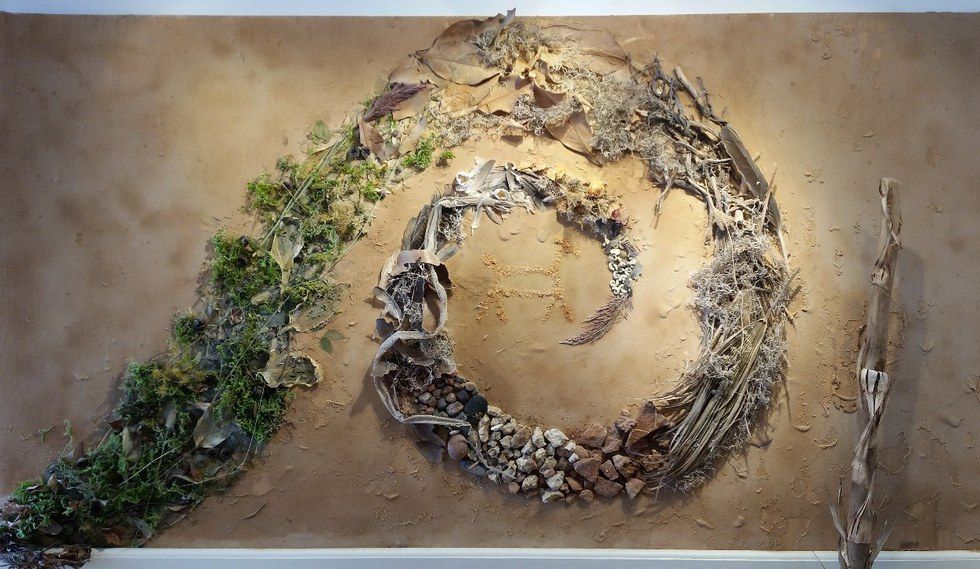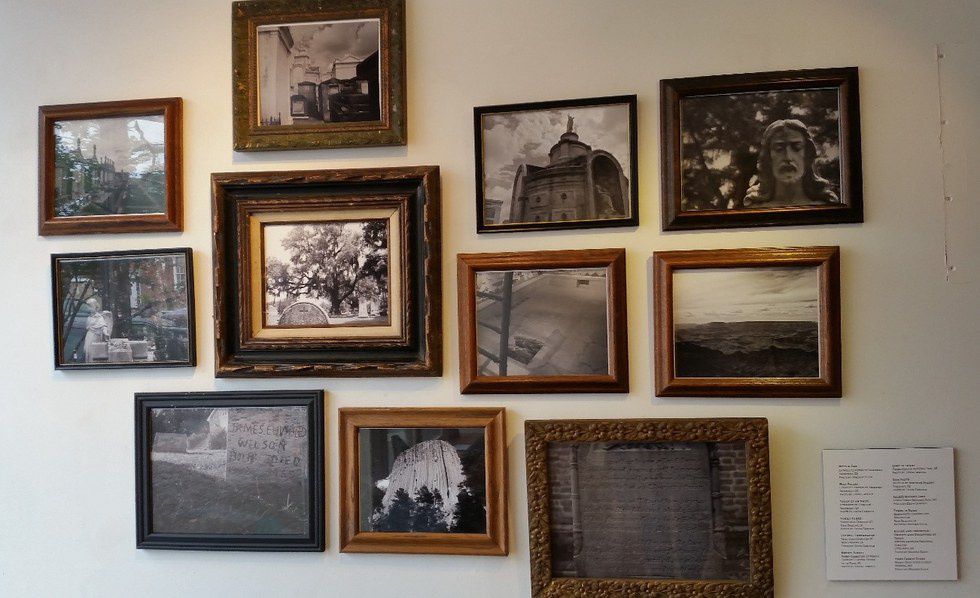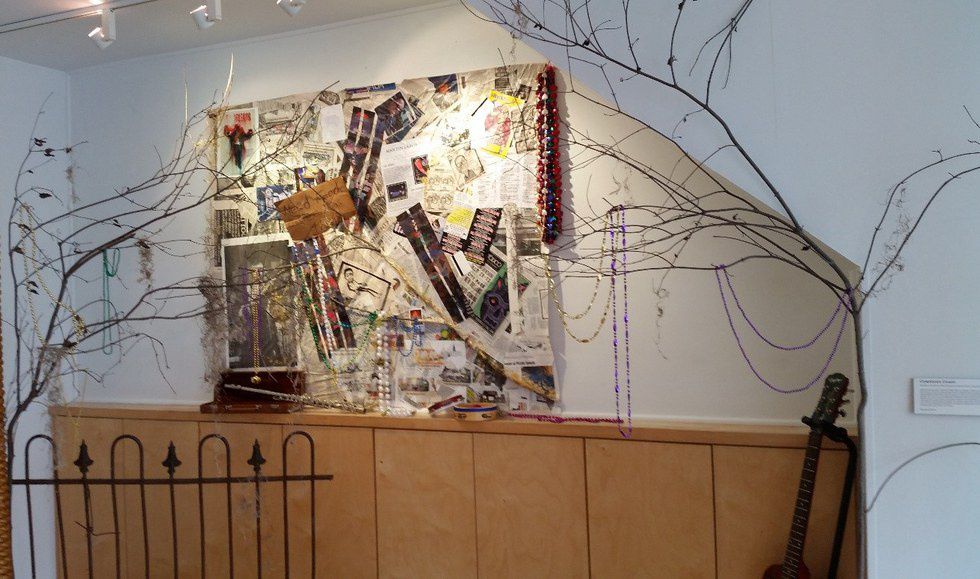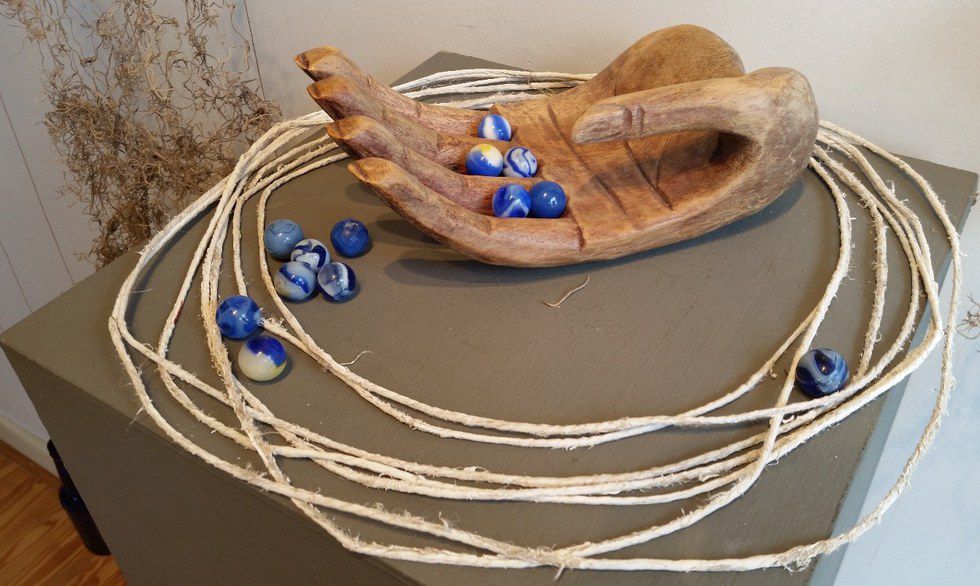Have you ever wondered what gives the rituals of our culture meaning? What about other cultures? Is there any way to reconcile the beliefs and practices of another culture with your own? These are questions that senior Washington College art student Meghan Dulin has asked herself in collaboration with Assistant Professor of Anthropology Doctor Julie Markin. If you find yourself questioning the connection between death and spirituality, stop by SANDBOX and take a moment to consider your own Death Perception through their work.
The exhibit features three main multimedia pieces by Dulin along with one by Markin. Markin debuts her first work of art titled Synthesis as an exploration of her cyclic view of life which intertwines both her Christian upbringing and anthropological training. Motifs of the cyclic worldview and blending of cultures and ideologies recur throughout the exhibit.
(De)Composition, a collaborative piece between Dulin and Markin, displays objects found across the country and even across the Pacific. A myriad of natural materials including acorns, snail shells, palm leaves, a snakeskin, and stones form a spiral mimicking the New Zealand Silver Fern which is a symbol of ongoing cycle of life and death which means that those we lose to death are never really gone. According to Dulin, the horse at the center of the spiral represents her journey as she completed the research for this exhibit.
Dulin and Markin collected objects from nature and were gifted other tribal artifacts and knowledge as they researched the rituals and conceptualizations of death among people groups in 31 states and New Zealand. Their domestic research took place over 30 days, and ranged from Williamsburg, Virginia to New Orleans and Neah Bay, Washington and almost everywhere in between. A SANDBOX student/faculty collaborative grant made their domestic travel and exhibition possible. Their travel abroad was funded by a generous grant from the Cater Society here at Washington College.
Composed Chaos highlights the fascinating culture surrounding death in New Orleans, Louisiana. Each of the objects in the collage was collected in the city, including a sign from a homeless person and a poem written on the spot by a street performer. The piece channels the hectic atmosphere of New Orleans and the particular blending of Catholicism and indigenous beliefs that occurs there. Cemeteries become monuments with elaborate sculptures and mausoleums honoring the dead along with offerings to appease them that are swiftly removed by the church. Jazz funerals lead loud parades circuitously through the streets so the spirits become confused and cannot follow the living home, almost in a celebration rather than mourning.
The Gullah people of South Carolina practice a similar blending of Christian and traditional indigenous beliefs. These beliefs inspired the final piece on display. Seeking showcases the connection between death and spirituality for the Gullah, named after a rite of passage young adults must go through in Gullah society. They must wear a white band around their heads that signal members of the community not to talk to them. They then learn about Christian scriptures and are sent to the woods at night by themselves. They will not be accepted back into society until they have faced the dangers of the dark and return unafraid because of their belief in God’s protection.
The ritual ostracism of the “Seekers” mirrors their fear of the spirits of the dead. The Gullah believe that the spirits of the deceased will return to their earthly homes unless all of their material needs are met by their living family; thus shrines with offerings such as silverware and a particular vibrant shade of blue glass are placed outside the community to keep the spirits at bay. Even the blue glass has multiple levels of meaning to the Gullah. In traditional sacred Christian art, a deep blue color often represented purity, but in West African culture, the same color was thought to repel spirits. The Gullah blend these different beliefs.
Dulin and Markin’s work makes the mysterious nature of spirituality evident through their research on beliefs surrounding death. According to Markin, the process of interviewing people about their views of death revealed much about how they saw life. Dulin was particularly inspired by the different levels of comfort people derived from their own rituals dealing with death. Their work together explores the implications of death rituals and how we perceive cultural values as they blend many diverse ideas and media. Death Perception will be on display through September 23 at SANDBOX, Tuesday through Friday 10:00 a.m. to 4:00 p.m.























